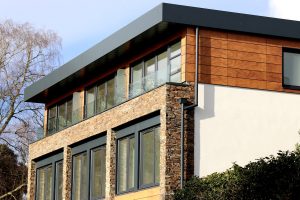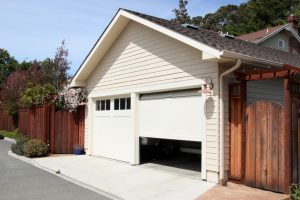One misconception about sustainability is that it’s not an economic concern and just an environmental issue. With the endless consumption of finite resources, it’s not only the planet that’s suffering. This harmful practice is also affecting several economic resources include healthcare and education. With this alarming issue, many homeowners practice sustainable lifestyles to play their part in preserving the environment.
This shift in lifestyle urged individuals and families into building more eco-friendly homes. Over the past years, numerous residential contractors are also working on green builds. You can now see residential buildings using solar-energy systems and single-family homes installing energy-efficient lighting. But besides those mainstream eco-friendly strategies, there are more ways for you to build a sustainable family home or residential building. Here are they.
1. Build a smaller house
This may not be applicable for a residential building. But if you’re working on a property such as a single-attached home, building it to be smaller is a wise move. Smaller homes obviously require less energy to warm or cool down and fewer building materials. In fact, the popular movement of tiny homes promotes the use of recycled or reclaimed materials in home building. In designing a home, it’s advisable to only have a number of rooms that match the number of people who will live in it.
Smaller housing options are becoming a popular choice for many rural and urban settings nowadays, not just because of their efficiency. Such homes also promote lower environmental impact, affordability, and minimal maintenance costs.
2. Install energy-efficient systems and appliances
One of the biggest sustainability trends today is the use of energy-efficient systems and appliances. Besides solar-energy systems, numerous residential buildings today use high-performing building envelopes to minimize energy loss, from air-sealed construction to high-performing glazing and windows. Others even use high-performance controlled ventilation, including heat recovery and mechanical insulation.
To ensure proper installation and efficiency of building systems such as envelope, electrical, and plumbing systems, building owners are advised to carry out commissioning. Building commissioning doesn’t just help maximize energy efficiency; it also prevents costly breakdowns and ensures occupant safety.
As for the average homeowners who don’t need such building systems, using energy-efficient appliances is just as helpful. Some appliances with energy-efficient models include dishwashers, furnaces, dehumidifiers, air conditioners, and refrigerators. Buy appliances with ENERGY STAR rating or symbol.

3. Installing proper insulation
Insulation isn’t used on smaller homes only. It is also used on tall residential buildings to lower their energy consumption and keep the costs down. Primarily promoting energy efficiency, insulating helps protect our planet by reducing carbon dioxide emissions, which is climate change’s main driver. However, with improper insulation, you are likely to spend more on the heating and cooling of your space or building, demanding to run more resources.
For residential builders and homeowners, it is best to avoid harmful insulation materials like fiberglass. Insulation options such as wool, cotton, or cork are safer and more sustainable materials to consider. In specific, some types of eco-friendly insulation include aerogel, sheep’s wool, polystyrene, icynene, and cellulose.
In case you don’t have the relevant skills and knowledge in insulating, hire an expert to do it to avoid poor insulation. It’s also a smart decision to have regular inspections for your residential property’s insulation and air sealing. The U.S. Department of Energy recommends having these inspections at least once a year.
4. Cool your roof
For single-family houses, the roofing material can make a significant impact on the structure’s energy efficiency. Professional builders recommend using products that reflect the energy of the sun away from the roof itself. Roofing products that hold less heat for less time and cool faster at night are also great options. Some materials that offer eco-friendly benefits include metal roofs, white tiles, slate, and terra cotta.
Take note, though, that such products have different degrees of green benefits, so check their qualities first. While most green roofing options tend to be a bit expensive, you can surely recoup your money in the long run since they require minimal maintenance and are energy-saving too. In fact, green roofs are even more widely used by commercial buildings than residential ones.
There are many smart building options and green products out there that can help your home or residential building perform better and reduce its environmental impact. As the concept of green building continues to create a positive impact on our planet, you’d not run out of ideas to take into account. So regardless if you’re a simple homeowner building your tiny home or someone planning to build a residential condominium, the green practices in this blog are absolutely worth investing in.






